- Importance of autumn planting for gooseberry
- 1. Root establishment
- 2. Reduced transplant shock
- 3. Winter dormancy
- 4. Early spring growth
- 5. Disease prevention
- Choosing the right variety for your garden
- Planting
- Preparing the soil for gooseberry planting
- Planting gooseberry bush
- Providing proper irrigation and drainage
- Care
- Watering
- Fertilizing
- Mulching
- Pruning
- Pest and Disease Control
- Harvesting
- Transplanting
- Fertilizing the gooseberry bush
- 1. Timing
- 2. Choosing the right fertilizer
- 3. Applying the fertilizer
- 4. Mulching
- 5. Regular fertilization
- 6. Avoid over-fertilizing
- 7. Monitoring the plant
- Protecting the plant from pests and diseases
- Common pests affecting gooseberry plants:
- Common diseases affecting gooseberry plants:
- Preventive measures:
- Pruning techniques for optimal growth
- Timing:
- Tools:
- Techniques:
- Care after pruning:
- Question-answer:
- When is the best time to plant gooseberry in autumn?
- How should I care for gooseberry plants during autumn?
- Can I prune my gooseberry plants in autumn?
- Is it possible to transplant gooseberry plants in autumn?
- What are some common pests and diseases of gooseberry plants in autumn?
- Video: How to tie gooseberries and redcurrants
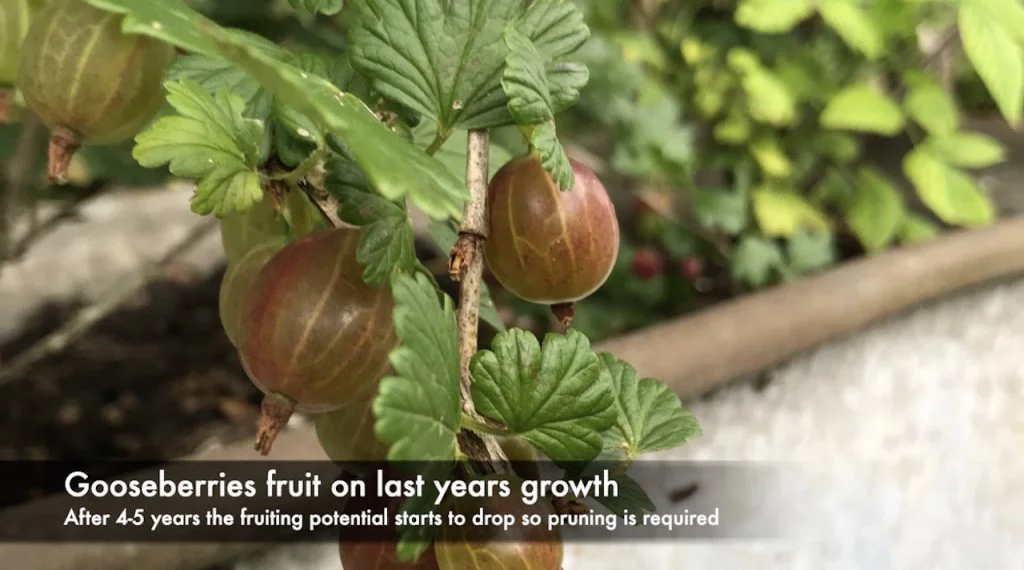
Gooseberry is a popular fruit bush that belongs to the Ribes genus. It is known for its small, tart berries that are packed with vitamins and antioxidants. Autumn is the perfect time to plant gooseberries, as the cooler temperatures allow the plant to establish its roots before winter. Planting gooseberries in autumn gives them a head start for the next growing season.
When it comes to care, gooseberries are relatively low-maintenance plants. They prefer well-drained soil and a sunny location, although they can tolerate partial shade. Regular watering is important, especially during dry spells, to keep the plants hydrated. Gooseberries should also be fertilized in early spring to promote healthy growth.
Pruning is another important aspect of gooseberry care. It is best to prune gooseberries in late winter or early spring, before new growth begins. Pruning helps to maintain the shape of the plant and improve air circulation, reducing the risk of disease. It also encourages the growth of new shoots, which will bear fruit in the coming season.
Transplanting gooseberries should be done in early spring or late autumn. Care should be taken to dig up the plant, including as much of the root system as possible, and replant it at the same depth in its new location. Watering the transplanted gooseberry thoroughly will help it to establish in its new spot.
Importance of autumn planting for gooseberry
Planting gooseberry in autumn is extremely important for its overall growth and development. Autumn planting provides numerous benefits for the gooseberry plant, making it more resilient and productive in the long run.
1. Root establishment
When gooseberries are planted in autumn, they have ample time to establish their root system before the onset of winter. This allows the plant to develop a strong foundation and improved nutrient absorption capabilities.
2. Reduced transplant shock
Transplanting gooseberries during autumn helps to minimize transplant shock, as the cooler weather and lower humidity levels prevent excessive moisture loss and stress on the plant. This increases the chances of successful transplantation and survival.
3. Winter dormancy
Autumn planting ensures that the gooseberry plant enters its natural dormant phase during winter. This period of dormancy is essential for the plant’s overall health and vitality, as it allows for root development and conserves energy for spring growth.
4. Early spring growth
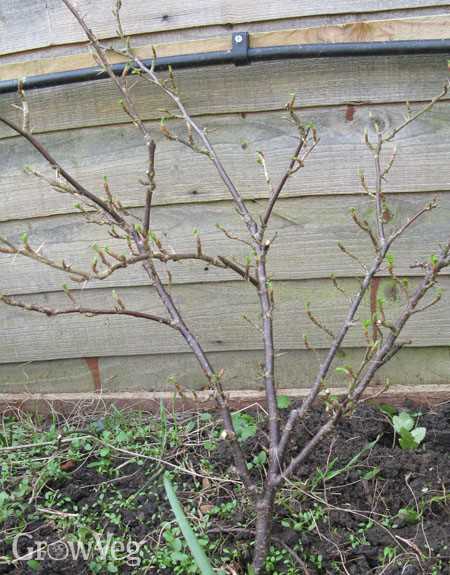

By planting in autumn, gooseberry plants are able to utilize the stored energy from winter dormancy to kick-start early spring growth. This early growth advantage gives the plant a head start and enables it to produce more flowers and fruits during the growing season.
5. Disease prevention


Planting gooseberries in autumn also helps to prevent certain diseases, as cooler temperatures reduce the activity of pests and pathogens. Additionally, the dormant period during winter helps to eliminate any existing diseases or pests that may be present in the plant.
In conclusion, autumn planting is crucial for the successful growth and productivity of gooseberry plants. It allows for root establishment, reduced transplant shock, winter dormancy, early spring growth, and disease prevention. By taking advantage of the favorable autumn conditions, you can ensure the optimal health and yield of your gooseberry plants.
Choosing the right variety for your garden
Gooseberries come in a variety of colors, flavors, and sizes. When selecting a gooseberry variety for your garden, it is important to consider your specific climate, soil conditions, and personal preferences.
Climate: Gooseberries thrive in cooler climates, as they require a period of dormancy during winter. If you live in a region with harsh winters, choose a variety that is cold-hardy and can withstand low temperatures. On the other hand, if you live in a warmer climate, select a variety that is heat-tolerant.
Soil conditions: Gooseberries prefer well-drained soil that is rich in organic matter. They can tolerate a range of soil types, from sandy to clayey, but it is important to ensure good drainage. If your soil is heavy and clayey, choose a variety that is more tolerant of these conditions.
Flavor and size: Gooseberries can be tart or sweet, so choose a variety that suits your taste preferences. Additionally, consider the size of the berries. Some varieties produce small berries, while others produce larger ones. Think about how you plan to use the berries – for fresh eating, baking, or making preserves – and choose a variety accordingly.
Resistance to pests and diseases: Some gooseberry varieties are more resistant to common pests and diseases, such as powdery mildew and gooseberry sawfly. If these issues are prevalent in your area, it is advisable to choose a variety that has good resistance.
Popular gooseberry varieties:
- Invicta: This variety produces large, green berries that are sweet and slightly tangy. It is known for its good disease resistance.
- Hinnonmaki Red: These gooseberries ripen to a deep red color and have a sweet-tart flavor. They are well-suited for fresh eating.
- Pax: This variety produces medium-sized, yellow berries with a sweet flavor. It is highly resistant to mildew and can tolerate a range of soil types.
Before making a final decision, it can be helpful to consult with local nurseries or gardening experts who can provide guidance on the best gooseberry varieties for your specific location.
Planting
Planting gooseberries in autumn is the preferred method as it allows the plant to establish itself before the harsh winter weather sets in. Here are the steps to follow for successful planting:
- Choose a suitable location: Gooseberries prefer a sunny spot with well-draining soil. Avoid areas with heavy clay or waterlogged soil.
- Prepare the soil: Before planting, remove any weeds or grass from the selected area. Loosen the soil using a garden fork or tiller to a depth of about 12 inches.
- Amend the soil: If your soil is not well-draining or poor in nutrients, you may need to amend it. Add organic matter, such as compost or well-rotted manure, to improve soil structure and fertility.
- Dig the planting hole: Dig a hole that is slightly larger and deeper than the gooseberry’s root ball. The hole should be wide enough to accommodate the roots without crowding.
- Place the plant in the hole: Gently place the gooseberry plant in the center of the hole, making sure the roots are spread out and not bent or tangled.
- Backfill the hole: Fill the hole with soil, firming it gently around the roots. Avoid packing the soil too tightly, as this can restrict root growth.
- Water the plant: After planting, thoroughly water the gooseberry plant to help settle the soil and provide moisture to the roots.
- Apply mulch: Spread a layer of organic mulch, such as bark chips or straw, around the base of the plant. This will help retain moisture, suppress weeds, and regulate soil temperature.
By following these steps, you can ensure that your gooseberry plant has a strong start and will be well-prepared to thrive in the coming seasons.
Preparing the soil for gooseberry planting
Proper soil preparation is essential for successful gooseberry planting. Here are the steps to follow:
- Choose the right location: Gooseberries prefer full sun or partial shade, so select a spot in your garden that receives at least 6 hours of direct sunlight per day. Make sure the area is well-drained to prevent waterlogging.
- Remove any weeds: Clear the planting area of any weeds or grass. This will help prevent competition for nutrients and water.
- Test the soil: Conduct a soil test to determine its pH and nutrient levels. Gooseberries prefer slightly acidic soil with a pH of 6.0 to 6.5. If the pH is too high, add some sulfur to lower it.
- Improve soil drainage: If your soil has poor drainage, consider adding organic matter such as compost or well-rotted manure. This will help improve the soil structure and allow excess water to drain away.
- Amend the soil: Based on the soil test results, you may need to amend the soil with additional nutrients. Follow the recommendations from the soil test or consult with a local garden center for advice.
- Loosen the soil: Use a garden fork or tiller to loosen the soil to a depth of at least 12 inches. This will create a loose and crumbly texture, making it easier for the gooseberry roots to penetrate and grow.
- Remove large stones: Remove any large stones or debris from the soil. These can hinder root growth and may cause damage to the plant.
- Level the soil: Make sure the soil surface is level and free from any lumps or bumps. This will provide a stable base for planting and prevent water from pooling around the roots.
By following these soil preparation steps, you can create an ideal growing environment for your gooseberry plants and ensure their long-term success.
Planting gooseberry bush
Planting a gooseberry bush is a straightforward process that requires some preparation and attention to detail. Here are the steps to follow:
- Choose a suitable location: Gooseberry bushes prefer a sunny spot with well-drained soil. Make sure the area receives at least six hours of direct sunlight each day.
- Prepare the soil: Prior to planting, the soil should be well-draining and rich in organic matter. Remove any weeds or grass from the area and dig a hole that is large enough to accommodate the roots of the gooseberry bush.
- Soak the roots: Before planting, immerse the roots of the gooseberry bush in water for about an hour to ensure they are well-hydrated.
- Plant the bush: Place the gooseberry bush in the prepared hole, making sure that the roots are spread out and not bent or twisted. The crown of the bush should be level with the soil surface.
- Backfill the hole: Gently backfill the hole with soil, taking care not to damage the roots. Firmly press the soil around the base of the bush to ensure good contact.
- Water the bush: After planting, water the gooseberry bush thoroughly to settle the soil and provide moisture to the roots. Make sure the water reaches the root zone.
- Apply mulch: Spread a layer of organic mulch, such as wood chips or compost, around the base of the gooseberry bush. This will help retain moisture and suppress weeds.
- Stake if necessary: If the gooseberry bush is weak or prone to leaning, it may need to be staked for support. Use a stake and tie it to the main stem of the bush with a soft material, such as twine or plant ties.
By following these steps, you can successfully plant a gooseberry bush in your garden. Remember to provide regular care and maintenance to ensure healthy growth and a bountiful harvest.
Providing proper irrigation and drainage
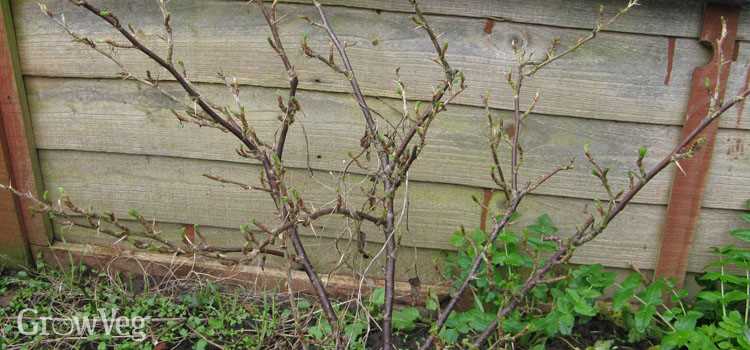

Proper irrigation and drainage are essential for the health and growth of gooseberry plants. Here are some important tips to ensure your gooseberry plants receive the right amount of water:
- Watering: Gooseberry plants require regular watering, especially during dry periods. Aim to keep the soil evenly moist, but not waterlogged, as excessive water can lead to root rot. Water the plants deeply, ensuring the water penetrates the root zone.
- Frequency: Water gooseberry plants at least once a week, providing approximately 1-2 inches of water per week. Adjust the watering schedule depending on weather conditions, with more frequent watering during hot and dry periods.
- Timing: Water your gooseberry plants in the morning or late afternoon to minimize water evaporation and allow the foliage to dry before evening, reducing the risk of fungal diseases.
- Drip Irrigation: Consider using a drip irrigation system to provide a slow, consistent water supply to the root zone. This can help prevent water wastage and ensure the water reaches the plants’ roots.
In addition to proper irrigation, it is important to ensure good drainage for your gooseberry plants. Here’s what you need to know:
- Well-draining soil: Gooseberries prefer well-draining soil. Avoid planting them in heavy clay soils that can become waterlogged. If your soil is heavy, consider amending it with organic matter, such as compost, to improve drainage.
- Elevated planting: If your garden has poor drainage, consider planting gooseberries in raised beds or mounds to provide better drainage. This can help prevent waterlogged soil and reduce the risk of root rot.
- Avoid overwatering: Overwatering can lead to waterlogged soil and root rot. Monitor the soil moisture and only water the plants when necessary.
- Mulching: Apply a layer of organic mulch, such as straw or wood chips, around the base of the gooseberry plants. Mulch helps retain soil moisture and can improve overall soil drainage.
By providing proper irrigation and ensuring good drainage, you can help your gooseberry plants thrive and produce a bountiful harvest.
Care
Watering
Gooseberries need regular watering, especially during dry spells. Water deeply, allowing the soil to become moist but not waterlogged. Watering should be done at the base of the plant to avoid wetting the leaves, as this can lead to disease.
Fertilizing
Gooseberries benefit from regular fertilizing to promote healthy growth and fruit production. A balanced fertilizer with a ratio of 10-10-10 or 12-12-12 can be applied in early spring before the buds start to open. Another application can be made in early summer to support fruit development.
Mulching
Mulching around the base of gooseberry plants helps to retain moisture in the soil, suppress weed growth, and insulate the roots. Apply a layer of organic mulch, such as straw or wood chips, around the plants, making sure not to cover the stem. Mulching can also help prevent fruit rot by keeping the berries off the ground.
Pruning
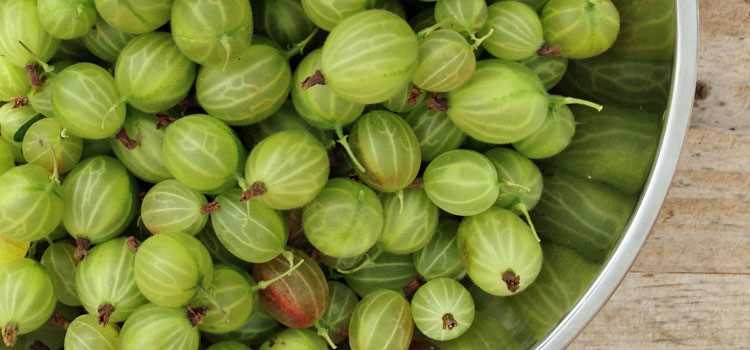

Pruning is an important part of gooseberry care, as it helps to maintain an open and productive plant. Prune in late winter or early spring before new growth begins. Remove any dead, damaged, or diseased wood, as well as any branches that are crossing or rubbing against each other. Aim to create an open center with good air circulation.
Pest and Disease Control
Gooseberries can be prone to pests such as aphids, sawflies, and spider mites. Regularly inspect the plants for any signs of infestation and take appropriate action, such as spraying with insecticidal soap or using natural predators like ladybugs. Disease-wise, gooseberries can be susceptible to powdery mildew and leaf spot. Proper spacing, good air circulation, and avoiding overhead watering can help prevent these diseases. Fungicides can be used if necessary.
Harvesting
Gooseberries are ready for harvest when they are firm, plump, and brightly colored. Harvesting can begin in late spring or early summer, depending on the variety. Simply grasp the berry gently and twist it off the stem. Be careful not to damage the delicate skin. Gooseberries can be enjoyed fresh, used in cooking, or preserved by freezing or canning.
Transplanting
If you need to move a gooseberry plant, it’s best to do so in late fall or early spring when the plant is dormant. Dig around the plant, taking care not to damage the roots too much. Transplant into a prepared hole in a new location, making sure the soil is well-drained and rich in organic matter. Water thoroughly after transplanting and provide adequate care to help the plant establish in its new spot.
Fertilizing the gooseberry bush
Proper fertilization is essential for the healthy growth and fruit production of your gooseberry bush. Below are some tips on fertilizing your gooseberry bush:
1. Timing
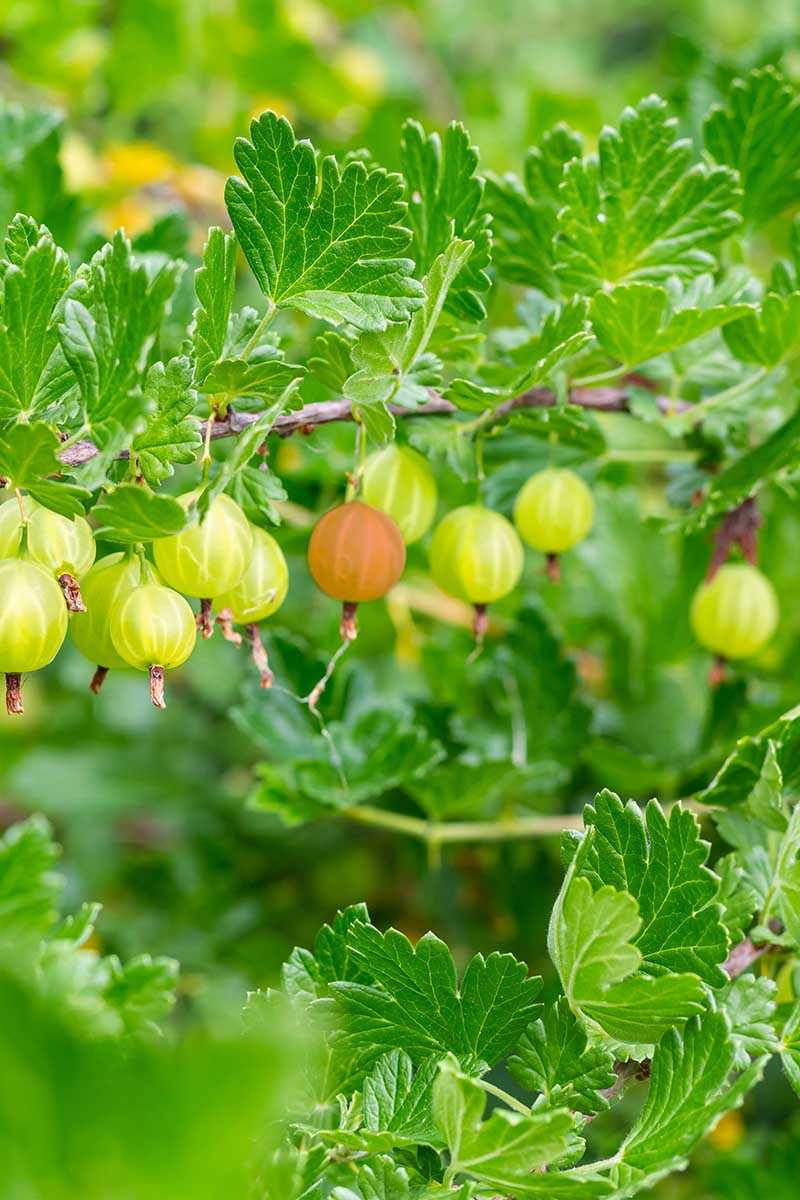

Gooseberry bushes should be fertilized in early spring, just before new growth starts. This will provide the plant with the necessary nutrients to support its growth and fruit development throughout the season.
2. Choosing the right fertilizer
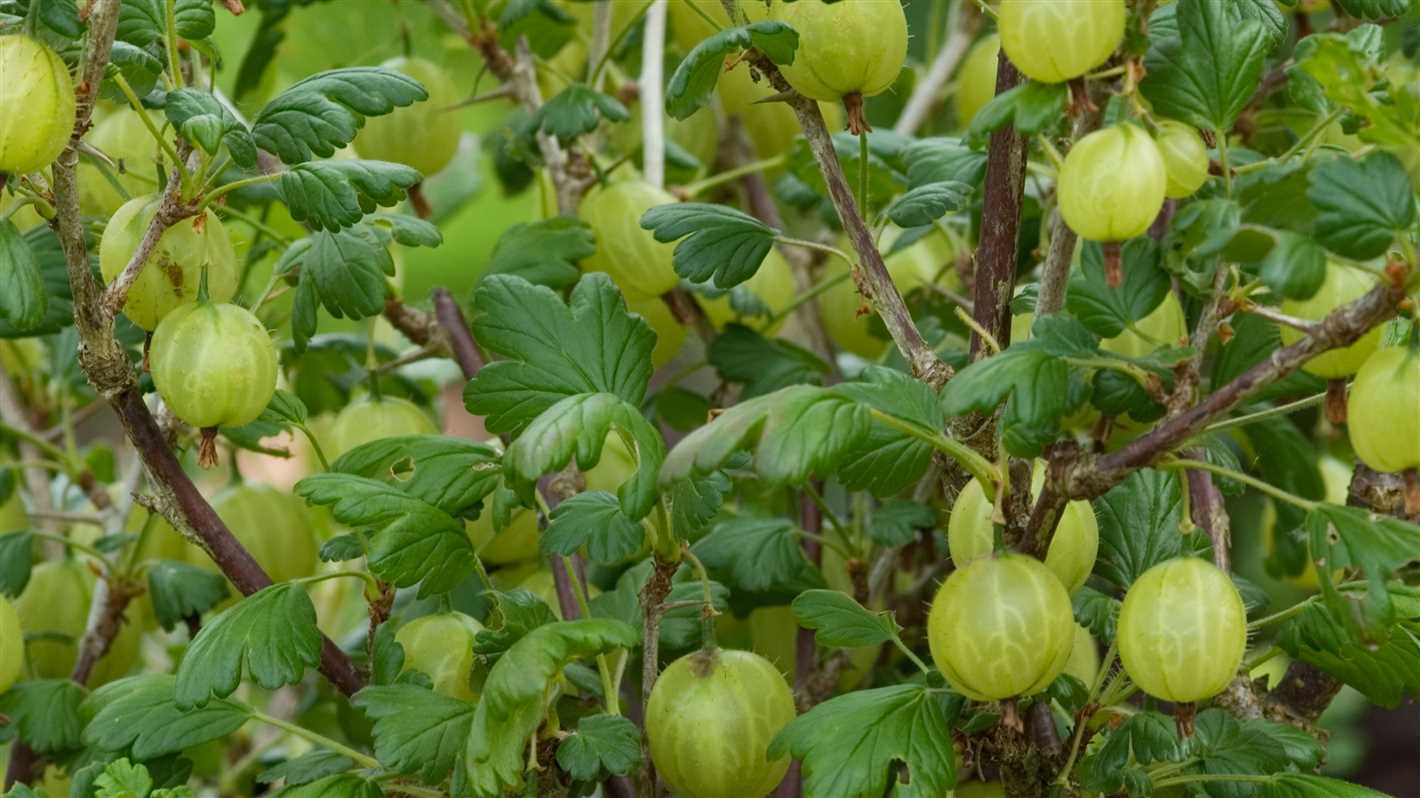

When selecting a fertilizer for your gooseberry bush, choose one that is balanced and specifically formulated for fruit-bearing plants. Look for a fertilizer with an NPK ratio of around 10-10-10 or 12-12-12.
3. Applying the fertilizer
Apply the fertilizer around the base of the gooseberry bush, avoiding direct contact with the stems. Use the recommended amount of fertilizer as indicated on the packaging, and distribute it evenly around the plant.
Tip: Water the plant thoroughly after applying the fertilizer to help it absorb the nutrients.
4. Mulching
After fertilizing, consider adding a layer of organic mulch around the base of the gooseberry bush. This will help retain moisture, suppress weeds, and provide additional nutrients as the mulch breaks down over time.
5. Regular fertilization


Gooseberry bushes benefit from regular fertilization throughout the growing season. Apply a balanced fertilizer every 4-6 weeks during the spring and summer months to sustain the plant’s growth and fruit production.
6. Avoid over-fertilizing
While fertilizing is important, it is crucial not to overdo it. Over-fertilizing can lead to excessive vegetative growth at the expense of fruit production and make the plant more susceptible to pests and diseases. Follow the recommended dosage and frequency of application for the specific fertilizer you are using.
7. Monitoring the plant
Keep an eye on the overall health and growth of your gooseberry bush throughout the season. If you notice any signs of nutrient deficiency or excess, adjust your fertilization routine accordingly.
By following these tips, you can ensure that your gooseberry bush receives the proper nutrients it needs to thrive and produce abundant and flavorful fruits.
Protecting the plant from pests and diseases
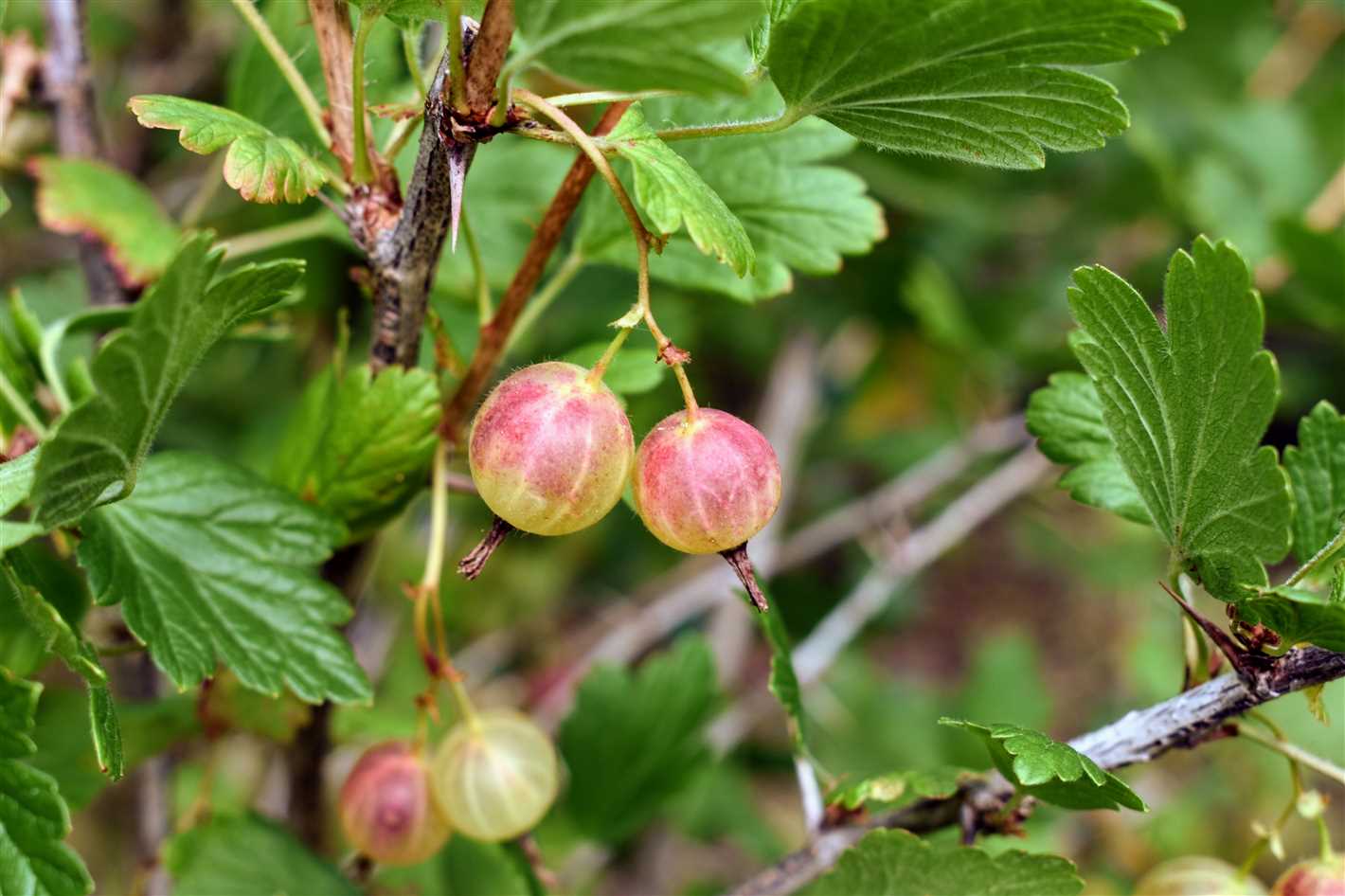

Gooseberry plants are susceptible to various pests and diseases that can significantly affect their growth and yield. However, with proper care and preventive measures, you can protect your plants and ensure their health.
Common pests affecting gooseberry plants:
- Aphids: These small insects feed on the sap of the plant, causing distorted growth and yellowing of leaves. Regularly inspect your plants for aphids, especially during the early spring and summer months. Use insecticidal soap or neem oil to control aphid infestations.
- Currant fruit fly: The larvae of this fly feed on the fruit of gooseberries, causing them to become discolored and drop prematurely. Hanging sticky traps around the plants can help monitor and control the population of fruit flies.
- Sawflies: These caterpillar-like insects feed on the leaves of gooseberry plants, resulting in skeletonized leaves. Handpick sawflies when they are visible and use insecticides labeled for sawfly control.
Common diseases affecting gooseberry plants:
- American gooseberry mildew: This fungal disease causes a white powdery coating on leaves, shoots, and fruit. Proper spacing between plants, good air circulation, and avoiding overhead watering can help prevent mildew. Fungicides containing sulfur can be used for control.
- Gooseberry leaf spot: This fungal disease appears as small purple spots on the leaves. Remove and destroy infected leaves and ensure proper sanitation by clearing away fallen debris from around the plants.
- Botrytis fruit rot: This fungal disease affects the fruit, causing gray mold and rotting. Remove affected fruit and improve air circulation to prevent the spread of the disease. Fungicides can be used as a preventive measure.
Preventive measures:
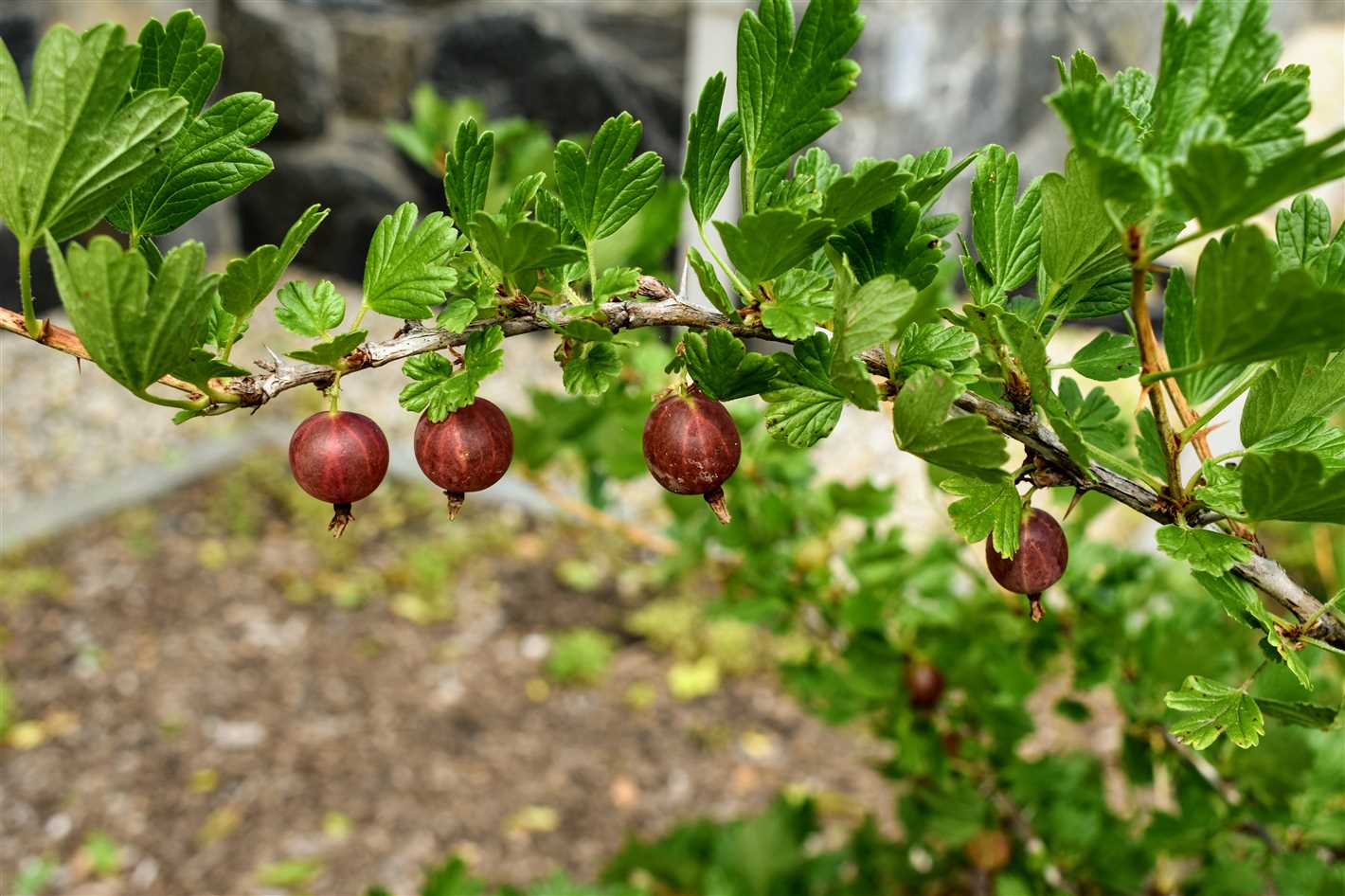

To protect your gooseberry plants from pests and diseases, follow these preventive measures:
- Plant gooseberry varieties that are resistant to common diseases.
- Ensure proper spacing between plants to allow for good air circulation.
- Regularly inspect your plants for signs of pests and diseases.
- Practice good sanitation by removing fallen debris and pruning infected parts.
- Avoid overwatering as it can promote fungal diseases.
- Apply organic or chemical pesticides when necessary, following the instructions provided.
By implementing these preventive measures and taking early action against pests and diseases, you can keep your gooseberry plants healthy and productive throughout the growing season.
Pruning techniques for optimal growth
Pruning is an important aspect of gooseberry care as it helps to promote optimal growth, remove dead or diseased wood, and maintain a healthy plant. Here are some effective pruning techniques to enhance the growth of your gooseberry plants:
Timing:
- Prune gooseberry plants in late winter or early spring, before the new growth begins.
- Remove any frost-damaged wood promptly to prevent the spread of diseases.
Tools:
- Use sharp, clean pruning shears or loppers to make clean cuts.
- Sterilize your cutting tools with rubbing alcohol before and after each use to prevent the spread of diseases.
Techniques:
- Start by removing any dead or diseased wood, cutting it back to healthy growth.
- Thin out the center of the plant to improve air circulation and sunlight penetration.
- Remove any crossing branches or branches that are rubbing against each other.
- Prune back the long, leggy branches to encourage branching and create a bushier shape.
- Shorten the side shoots to about 5-6 buds to promote new growth and increase fruit production.
- Remove any suckers or shoots growing from the base of the plant.
Care after pruning:
- After pruning, apply a balanced fertilizer around the base of the plant to provide nutrients for new growth.
- Water the plant thoroughly to ensure proper hydration.
- Mulch around the base of the plant to help retain moisture and suppress weed growth.
- Monitor the plant for any signs of pests or diseases, and take appropriate action if necessary.
By following these pruning techniques, you can ensure optimal growth and productivity of your gooseberry plants. Regular pruning will help maintain a healthy and vigorous plant that will reward you with a bountiful harvest.
Question-answer:
When is the best time to plant gooseberry in autumn?
The best time to plant gooseberry in autumn is in September or early October when the temperatures start to cool down and the soil is still warm.
How should I care for gooseberry plants during autumn?
During autumn, make sure to water your gooseberry plants regularly, especially if there is no rainfall. Also, remove any fallen leaves or debris from around the plants to prevent the spread of pests and diseases.
Can I prune my gooseberry plants in autumn?
It is not recommended to prune gooseberry plants in autumn. Pruning is best done in late winter or early spring before the new growth starts. Pruning in autumn can stimulate new growth that may be susceptible to winter damage.
Is it possible to transplant gooseberry plants in autumn?
It is possible to transplant gooseberry plants in autumn, but it is generally better to do so in early spring before the new growth starts. If you need to transplant in autumn, make sure to dig up the plant carefully, preserving as much of the root system as possible, and transplant it to its new location promptly.
What are some common pests and diseases of gooseberry plants in autumn?
Some common pests of gooseberry plants in autumn include aphids, gooseberry sawfly, and spider mites. Diseases such as powdery mildew and leaf spot can also occur. Regular inspection and early treatment can help prevent serious damage to the plants.







